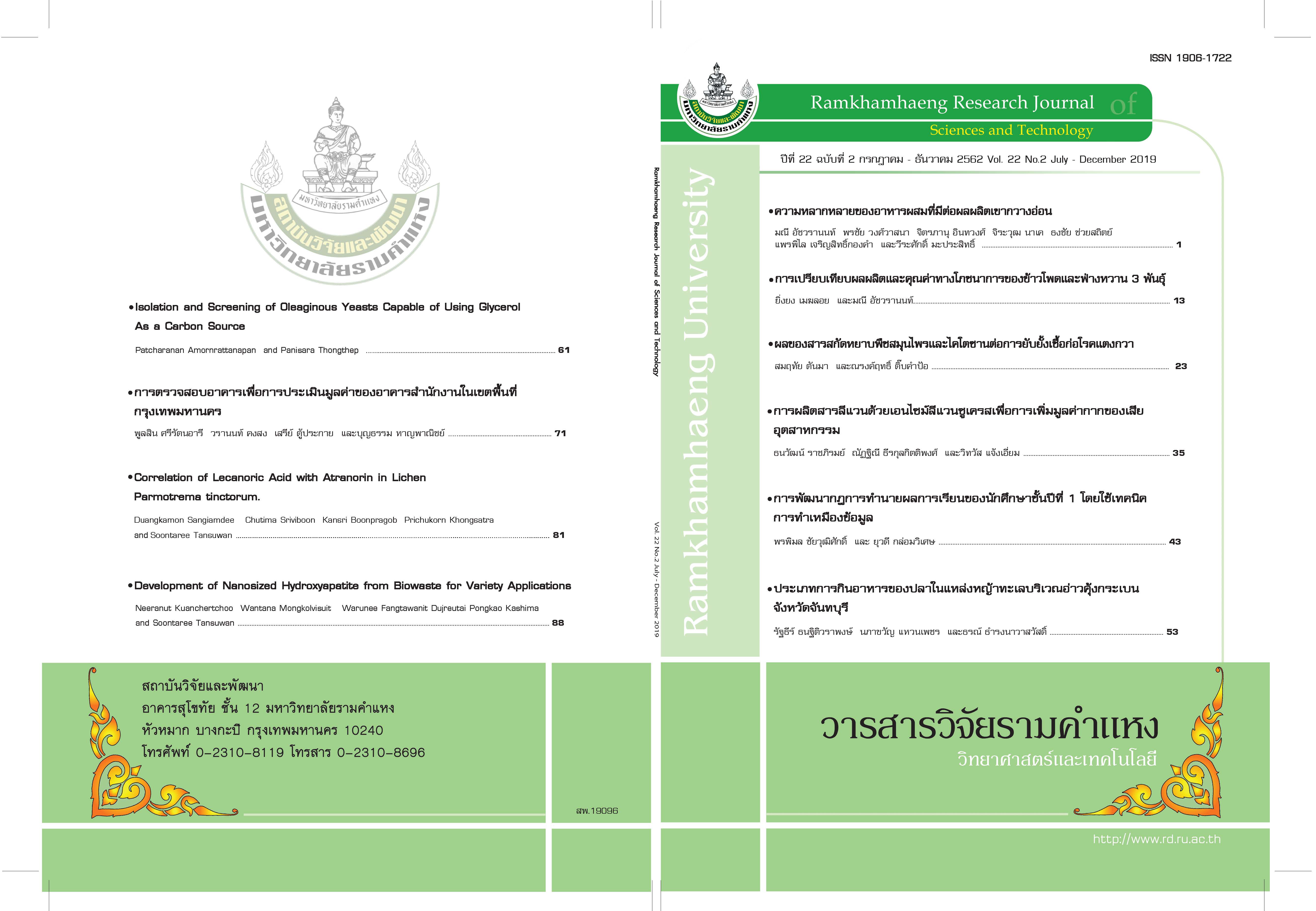Feeding Types of Fish in Seagrass Beds in Khung Kraben Bay Area, Chanthaburi Province
Main Article Content
Abstract
In this research investigation, the researchers study the feeding types of fish in the seagrass beds in the Khung Kraben Bay (KKB) area, Chanthaburi province. There were thirty-eight fish species in the 826 specimens that were collected between January 2017 and January 2018. It was found that the food types that fish consumed could be divided into four major types: animals; plants; planktons; and detritus. These could be divided into twenty-five minor groups of food. The dominant food items in each type mostly consumed by fish were shrimps, seagrass, copepods, and sediments. The highest proportion of fish in the sample fish population from the seagrass beds in the KKB area were carnivorous fish (65-79 percent).
The proportion of food consumed by the fish in each area studied could be divided into two groups of feeding types based on the distribution of the seagrass. In the area of seagrass distribution were fish consuming animals and plants. In the area with no distribution of seagrass there were mainly fish consuming animals and detritus. The gut fullness index (FL) showed an average of 5.61 ± 2.67. It was also found that the FL was higher during the ebb tide than during the high tide. This means that the fish coming to the KKB utilized seagrass beds as the source of food supply.
Article Details
Ramkhamhaeng University
References
สุวลักษณ์ นาทีกาญจนลาภ. 2534. หญ้าทะเล. จุฬาลงกรณ์มหาวิทยาลัย, กรุงเทพฯ. 29 หน้า.อุกกฤต สตภูมินทร์ และ สุรีย์ สตภูมินทร์. 2548. อาหารและนิสัยการกินอาหารของปลาในแหล่งหญ้าทะเลทางฝั่งตะวันออกของเกาะภูเก็ต. เอกสารวิชาการฉบับที่ 16 / 2548. สถาบันวิจัยและพัฒนา ทรัพยากรทางทะเล ชายฝั่ง และป่าชายเลน, กรมทรัพยากรทางทะเลและชายฝั่ง กระทรวงทรัพยากรธรรมชาติและสิ่งแวดล้อม. 47 หน้า.
Carpenter, K.E. and Niem V.H. (eds). 1999. FAO species identification guide for fishery purposes. The living marine resources of the Western Center Pacific. Volume 3 and 4. Food and Agriculture Organization of the United Nation, Rome. 1379-2790.
Carpenter, K.E. and Niem V.H. (eds). 2001. FAO species identification guide for fishery purposes. The living marine resources of the Western Central Pacific. Volume 5 and 6. Food and Agriculture Organization of the United Nation, Rome. 2791-4218.
Horinouchi, M. and Sano M. 2001. Effects of changes in seagrass shoot density and leaf heighton the abundance of juveniles of Acentrogobius pflaumii in a Zostera marina bed. Ichthyological Research. 48(2): 179-185.
Horinouchi, M., Tongnunui P., Furumitsu K., Nakamura. Y., Kanou K., Yamaguchi. A., Okamoto K. and Sano. M. 2012. Food habits of small fishes in seagrass habitats in Trang, southern Thailand. Fish Sci 78: 577-587.
Hyslop, E.J. 1980. Stomach content analysis – a review of methods and their application. Journal of Fish Biology. 17: 411-429.
Mariani, S. and Alcoverro. T. 1999. A multiple-choice feeding-preference experiment utilising seagrasses with a natural population of herbivorous fishes. Marin Ecology Progress Series. 189: 295-299.
Schultz, S.T., Kruschel C. and Bakran-Petricioli. T. 2009. Influence of seagrass meadows on predator–prey habitat segregation in an Adriatic lagoon. Marin Ecology Progress Series. 374: 85-99.


